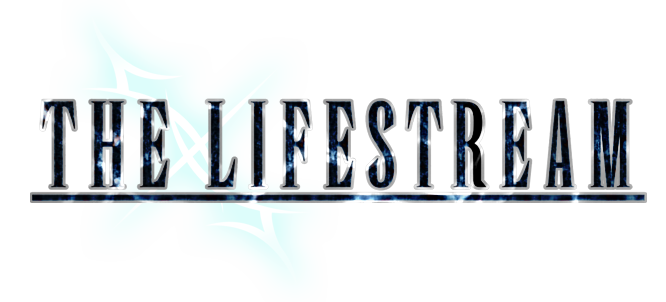nitramXIII
Lv. 1 Adventurer
- AKA
- lab rat dog
Here is an image of the strokes shape/order/direction
sorry for the bad drawing
sorry for the bad drawing


There's even more; lately it has been discussed that even in the Ultimania, Aerith is not described as one of the two heroine. That description solely refers to Tifa now. Before the game's release, I remember saying "it's to hide her importance, surely Aerith is still one of the two heroines, FFVII has always been like that". But now the Ultimania describe her as "character of utmost importance". And, looking at the game, it is true; they stripped Aerith from the role of "heroine" (support for Cloud), to make her role just... way more. She is just so much more than the heroine, with everything that she knows, with how the game presents her... yup, there is much more.
And interestingly enough, if you look at the relationship and some scenes she has with Cloud and Tifa, Cloud is the one who protect her physically, but Tifa is always the one who makes sure she is good emotionally (train graveyard, but also in the Shinra tower; when they reunite too, the reunion is between the three, not only between Cloud and Aerith). I find the way that balance between the trio has been slightly changed absolutely fascinating. I'm still undeciding as what it means for the future, but I like to think about this these days.
Also, please take care and take all the days off from the internet you need! Losing people who are dear to us is an awful experience, I am so sorry you're going through this again.

Here is an image of the strokes shape/order/direction
sorry for the bad drawing



 é
é
There can be symbolism as flavor, symbolism as inspiration, and even symbolism as roadmap, but if symbolism is to be an actual plot element, it needs to announce itself alongside the rest of the plot.

Famitsu said:– I’m sure that there are several younger development staff who never played the original FFVII, so were there any instances where there was a bit of a generation gap?
Kitase: “Not really. But I guess when we wanted to give an example from a movie or something, we wouldn’t bring up a reference from an old movie that they probably wouldn’t know (laughs)”
– In regards to the FFVII Remake production, was there anything you were particular about?
Kitase: “In the latter half of the story, there is a scene where Cloud & Sephiroth have a confrontation. I wanted the scenery of that segment to show a starry sky that represents the overall themes of FFVII, and the art design team was able to bring that image to life.”
Via:


Sure, that may inform what decisions they will or won't make with the storytelling (e.g. the directions the narrative may take, how it will be presented, etc.). Those are real-world considerations, though.That's why there's so much to tl;dr about, and why you can tell so much about what they will or won't do based on their own design rules outside of the game.

The "God of War" series is probably one of the last places one should go looking for fidelity to source material.

Sure, that may inform what decisions they will or won't make with the storytelling (e.g. the directions the narrative may take, how it will be presented, etc.). Those are real-world considerations, though. Within the fictional setting itself, Tifa's behavior is not being dictated by cosmic leylines and the Black Materia doesn't have to be handed from one person to another in order for the otherwise stated rules of its function to be an option -- regardless of how closely her behavior in the narrative or the depiction of the materia's activation may hew to associated ideas in the real world.

There's also the element where some rules do have to be stated for them to really work in the setting of the story. The Black Materia and White Materia are two such objects. The Black Materia (Meteor) is... a lot more straight forward because it's called "ultimate destructive magic". Its effect of "destruction" is used to describe what it is/does. What is specificly does is smash a small moon/meteor into the Planet.
The White Materia (Holy) is more nebulous because "ultimate creation magic" or "ultimate restorative magic" is never used anywhere to describe what it is/does. It's simply called "ultimate White Magic spell" with no given definition for what "White Magic" actually is. To identity what "White Magic" is, you really need to go look at White Magic across the FF franchise. Which reveals White Magic is mainly about healing and sometimes status effects. Except for Holy; which is always a damaging spell. But none of that is actually in FF7 itself. So appealing to that is very... Doyalist.
What is in FF7 is a specific description of what Holy does. Which is "make anything that is bad for the Planet disappear". Which is... essentially complete annihilation for anything the Planet thinks shouldn't be around. If anything, Holy sounds like it's a Planet-wide "Warp/Banish" spell which has bounced around in the Black/Time Magic spells for a while. How Holy can be thematically linked to "creation" as a concept makes... very little sense to me. Unless there is some sort of system already in place that needs it's "creation" aspect filled in. Which makes perfect sense except for the fact that that makes Holy into the opposite of what the game actually says it is.
What does make me think of "creation" in a thematic sense is Aerith rallying the Lifestream after Holy fails to stop Meteor. At the very least, she's getting the lifeforce of the Planet to do something to prevent destruction. Great Gospel in ACC also seems like it would fit the "creation/restoration" theme very well, if not better. It even has Geostigma to be the "destruction" counterpart.

